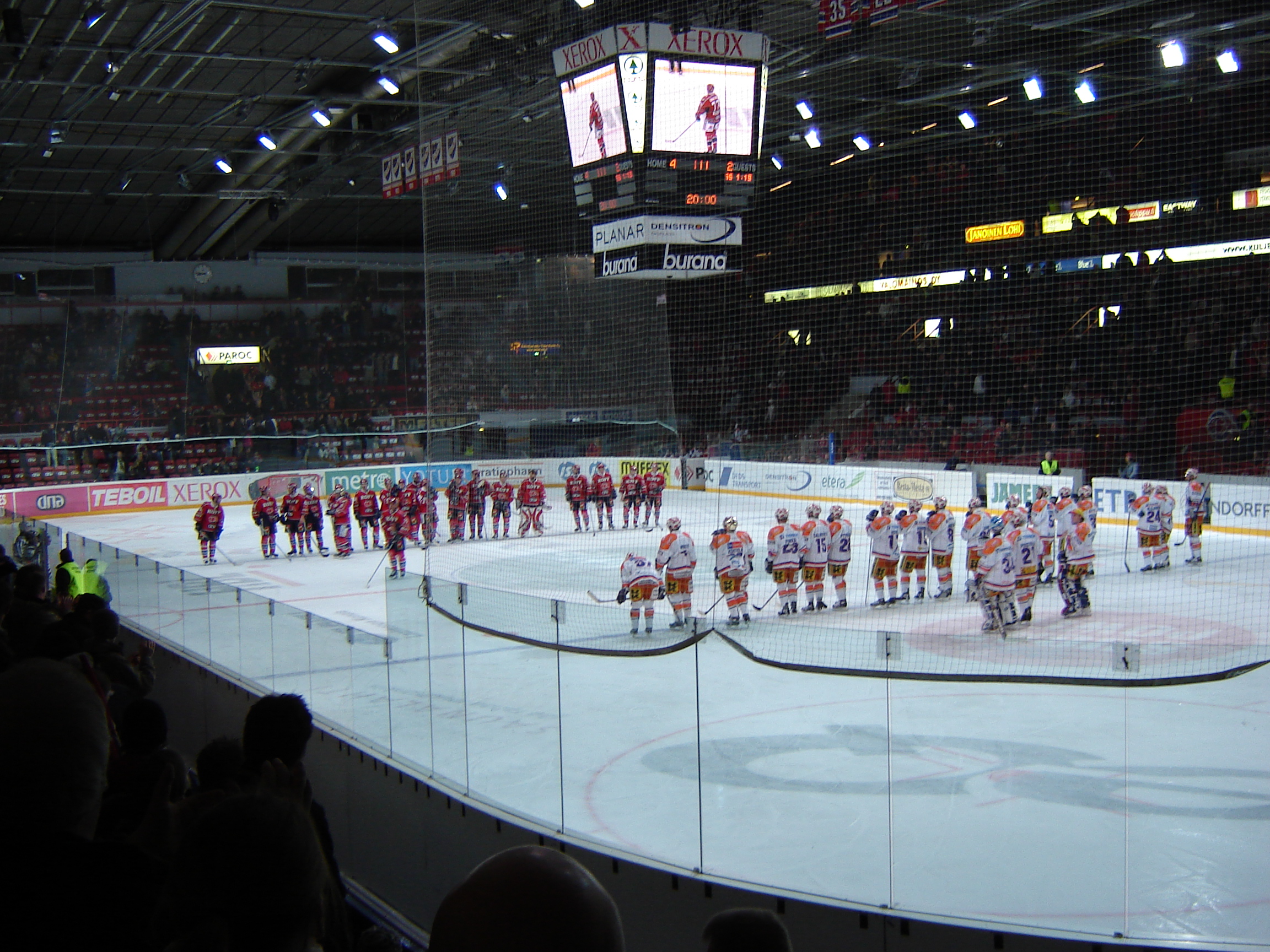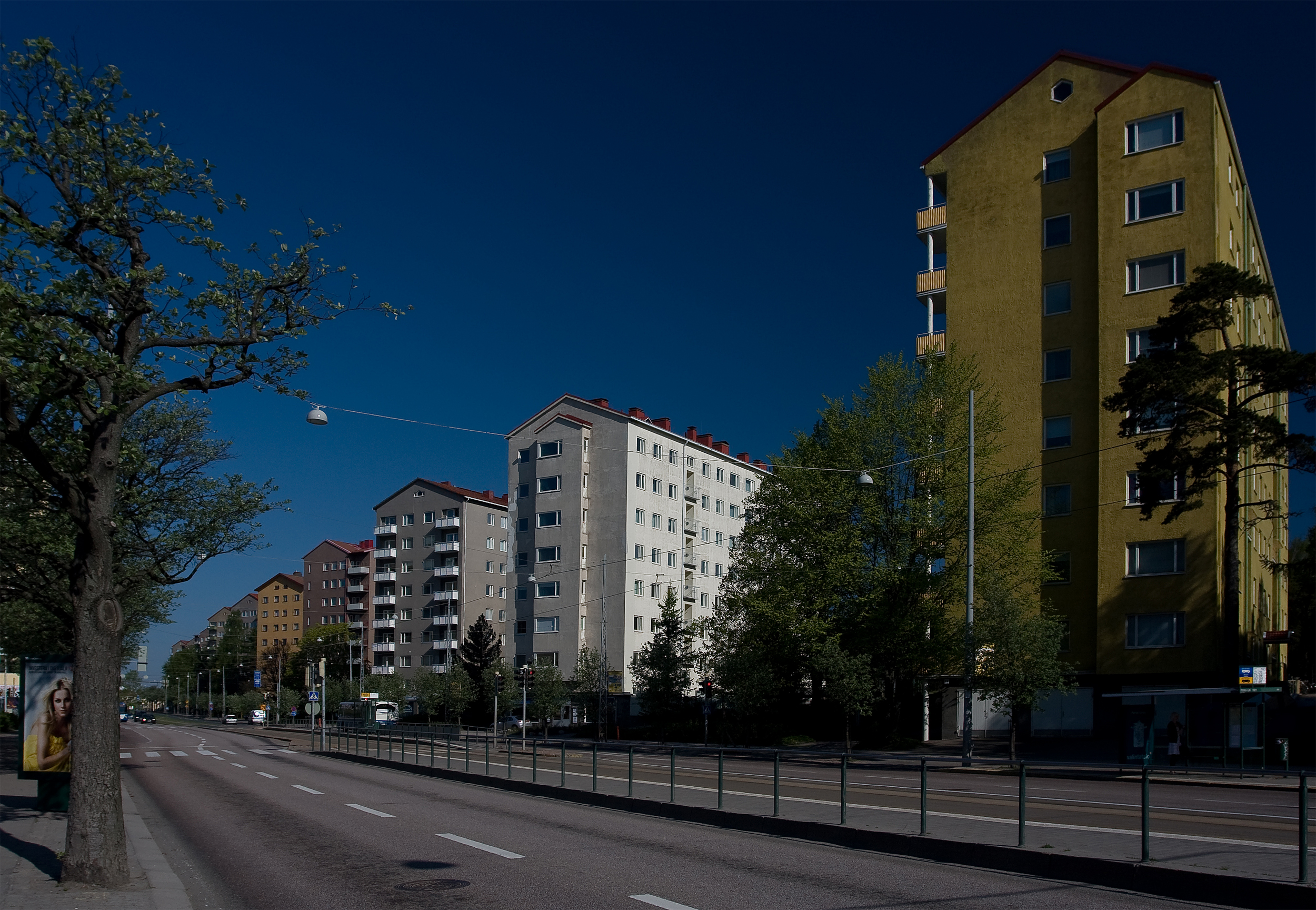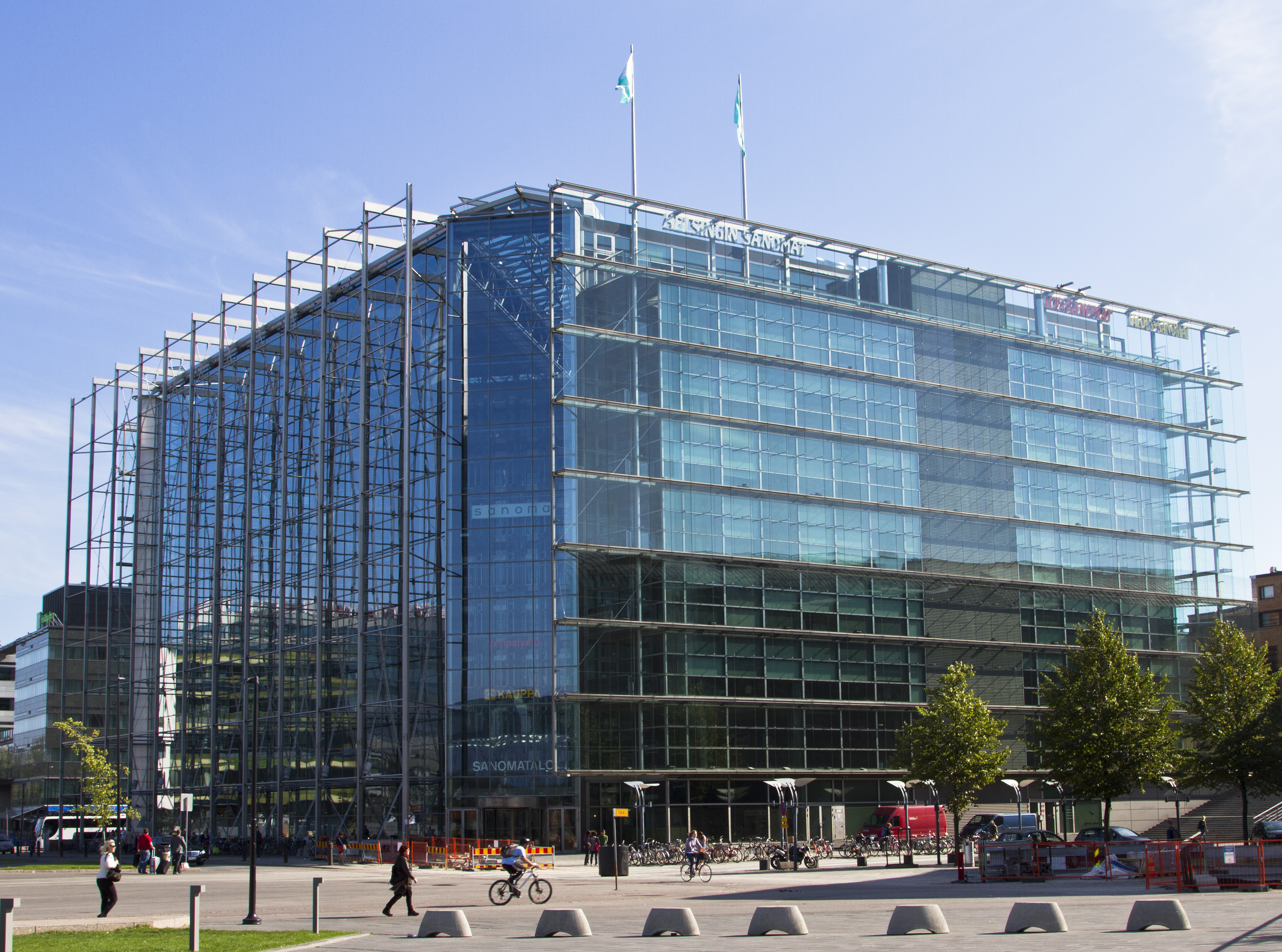|
Nordenskiöldinkatu
Nordenskiöldinkatu (Swedish: ''Nordenskiöldsgatan'') is a frequently trafficked street in Helsinki, Finland, going from Taka-Töölö to Alppila and Pasila. It was named after the explorer Adolf Erik Nordenskiöld.''Helsingin kadunnimet, Helsingin kaupungin julkaisuja nro 24'', p. 124. Name bureau of the city of Helsinki, 1970. Nordenskiöldinkatu is a continuation of Mechelininkatu. Its western end is at the Nordenskiöld square in Taka-Töölö, where Mechelininkatu ends, and which is also connected to Topeliuksenkatu and Linnankoskenkatu. Its eastern end is at a railroad underpass, after which it changes its name to Savonkatu and continues towards Itä-Pasila. Nordenskiöldinkatu is the only street to run across Mannerheimintie keeping the same name on both sides. Only the western part of Nordenskiöldinkatu has residential block houses, between the Nordenskiöld square and Urheilukatu. In this part are also located the Russian science and culture centre and the head of ... [...More Info...] [...Related Items...] OR: [Wikipedia] [Google] [Baidu] |
Helsinki Ice Hall
Helsinki Ice Hall ( fi, Helsingin jäähalli, sv, Helsingfors ishall) is an indoor arena located in Helsinki, Finland. The arena has a seating capacity of 8,200. History Helsinki Ice Hall has been the home arena of HIFK of Liiga since its construction in 1966. The arena was also the home of Jokerit from 1967 until the team moved to the new Hartwall Arena in 1997. Helsinki Ice Hall used to be the main venue for the majority of important ice sports events and indoor arena concerts held in Finland, but after the constructions of Gatorade Center in 1990, Hartwall Arena in 1997, and Tampere Deck Arena in 2021, many of the largest events now take place in the newer arenas. Nevertheless, the arena still remains an active venue for concerts, conferences, expos and sports events. During the 2016 World Junior Ice Hockey Championships, games were played there. While the Hartwall Arena was the planned secondary venue for the 2022 IIHF World Championship, the games of group A were moved t ... [...More Info...] [...Related Items...] OR: [Wikipedia] [Google] [Baidu] |
Laakso
Laakso ( sv, Dal) is a neighbourhood in Helsinki, Finland. Its borders are defined by the streets of Mannerheimintie and Nordenskiöldinkatu and the Helsinki Central Park. The neighbourhood is bordered by Töölö in the south, Meilahti in the southwest, Ruskeasuo in the north and Länsi-Pasila in the east. The neighbourhood has an area of 0.74 km², a population of 1781 and 1583 jobs (December 31, 2003). Laakso is neighbourhood #18 in the official neighbourhood numbering of Helsinki, and belongs to the district of Reijola. The population in Laakso is mainly concentrated in multiple-floor apartment buildings on Mannerheimintie. The neighbourhood also includes a hospital, a riding field, a traffic playground, and a large part of the southern Central Park. For the 1952 Summer Olympics, the neighborhood hosted the Eventing equestrian The word equestrian is a reference to equestrianism, or horseback riding, derived from Latin ' and ', "horse". Horseback riding (or Rid ... [...More Info...] [...Related Items...] OR: [Wikipedia] [Google] [Baidu] |
Adolf Erik Nordenskiöld
Nils Adolf Erik Nordenskiöld (18 November 183212 August 1901) was a Finland-Swedish aristocrat, geologist, mineralogist and Arctic explorer. He was a member of the Fenno-Swedish Nordenskiöld family of scientists and held the title of a friherre (baron). Born in the Grand Duchy of Finland at the time it was a part of the Russian Empire, he was later, due to his political activity, forced to move to Sweden, where he later became a member of the Parliament of Sweden and of the Swedish Academy. He led the ''Vega'' Expedition along the northern coast of Eurasia in 1878–1879. This was the first complete crossing of the Northeast Passage. Initially a troubled enterprise, the successful expedition is considered to be among the highest achievements in the history of Swedish science. Nordenskiöld family The Nordenskiölds were an old Fenno-Swedish family, and members of the nobility. Nordenskiöld's father, Nils Gustaf Nordenskiöld, was a Finnish mineralogist, civil servant an ... [...More Info...] [...Related Items...] OR: [Wikipedia] [Google] [Baidu] |
Laakso Hospital
Laakso ( sv, Dal) is a neighbourhood in Helsinki, Finland. Its borders are defined by the streets of Mannerheimintie and Nordenskiöldinkatu and the Helsinki Central Park. The neighbourhood is bordered by Töölö in the south, Meilahti in the southwest, Ruskeasuo in the north and Länsi-Pasila in the east. The neighbourhood has an area of 0.74 km², a population of 1781 and 1583 jobs (December 31, 2003). Laakso is neighbourhood #18 in the official neighbourhood numbering of Helsinki, and belongs to the district of Reijola. The population in Laakso is mainly concentrated in multiple-floor apartment buildings on Mannerheimintie. The neighbourhood also includes a hospital, a riding field, a traffic playground, and a large part of the southern Central Park. For the 1952 Summer Olympics, the neighborhood hosted the Eventing equestrian The word equestrian is a reference to equestrianism, or horseback riding, derived from Latin ' and ', "horse". Horseback riding (or Riding i ... [...More Info...] [...Related Items...] OR: [Wikipedia] [Google] [Baidu] |
Mannerheimintie
Mannerheimintie ( sv, Mannerheimvägen), named after the Finnish military leader and statesman Carl Gustaf Emil Mannerheim, is the main street and boulevard of Helsinki, Finland. It was originally named Heikinkatu ( sv, Henriksgatan), after Robert Henrik Rehbinder, but was renamed after the Winter War. The change of name was also suitable due to Mannerheim having paraded in along that road during the Finnish Civil War (1918), after German forces allied with Mannerheim's Finnish forces had retaken the city. That event is also portrayed in the landmark statue of Mannerheim sitting horseback. The statue is located along the Mannerheimintie just outside the modern arts museum Kiasma. The street starts at Erottaja in the city centre, near the Swedish Theatre and continues in a northernly direction past the Stockmann department store. It then continues as a main thoroughfare past the districts of Kamppi, Töölö, Meilahti, Laakso and Ruskeasuo, until it finally merges into a busy ... [...More Info...] [...Related Items...] OR: [Wikipedia] [Google] [Baidu] |
Helsinki Tram
The Helsinki tram network forms part of the Helsinki public transport system organised by Helsinki Regional Transport Authority and operated by Metropolitan Area Transport Ltd (Finnish: Pääkaupunkiseudun Kaupunkiliikenne Oy, Swedish: Huvudstadsregionens Stadstrafik Ab) in the Finnish capital city of Helsinki. The trams are the main means of transport in the city centre. 56.7 million trips were made in 2013. Helsingin kaupungin liikennelaitos The Helsinki system is one of the oldest electrified tram networks in the world. Lines In 2017, approximately of double track was in operation with 11 routes. Additional lines In addition to the 10 regular lines two special ones exist: the museum line operated by Helsinki City Transport in collaboration with Oy Stadin Ratikat Ab Stadin Ratikat and the Spårakoff pub tram, both of which run during the summer months. These lines do not appear in the route map included with this article. * Approximate week day figures in 24-hour ... [...More Info...] [...Related Items...] OR: [Wikipedia] [Google] [Baidu] |
Helsingin Sanomat
''Helsingin Sanomat'', abbreviated ''HS'' and colloquially known as , is the largest subscription newspaper in Finland and the Nordic countries, owned by Sanoma. Except after certain holidays, it is published daily. Its name derives from that of the Finnish capital, Helsinki, where it is published. It is considered a newspaper of record for Finland. History and profile The paper was founded in 1889 as ''Päivälehti'', when Finland was a Grand Duchy under the Tsar of Russia. Political censorship by the Russian authorities, prompted by the paper's strong advocacy of greater Finnish freedoms and even outright independence, forced Päivälehti to often temporarily suspend publication, and finally to close permanently in 1904. Its proprietors re-opened the paper under its current name in 1905. Founded as the organ of the Young Finnish Party, the paper has been politically independent and non-aligned since 1932. During the Cold War period ''Helsingin Sanomat'' was among the Finn ... [...More Info...] [...Related Items...] OR: [Wikipedia] [Google] [Baidu] |
Traffic Park
A traffic park or children's traffic park is a park in which children can learn the rules of the road. A traffic park is also called a ''transportation park'' or traffic garden or ''safety village'' depending on locale. Traffic parks are frequently created as an attraction within a larger park. In other cases, they are single-use parks and often small in scale. They can be found in urban as well as rural areas. Children are allowed to use bicycles or pedal-powered cars to navigate the streets and operate according to traffic laws. Sometimes they share a buggy with their parent, who can provide guidance as they circle the park. Typically, traffic parks are scaled-down versions of real street networks, with the lane and street-width proportional to the smaller vehicles. Often they include operating traffic signals and during busy times are even staffed with traffic police. One of the intentions of the traffic park is to improve awareness of traffic safety among school-aged children ... [...More Info...] [...Related Items...] OR: [Wikipedia] [Google] [Baidu] |
Helsinki Central Park
Central Park ( fi, Helsingin keskuspuisto, sv, Helsingfors centralpark) is a park in Helsinki, Finland. It has an area of . The park stretches from Töölönlahti Bay in the south to the border of Helsinki and Vantaa in the north. The park is not a gardened one but instead consists mostly of lightly managed woodland crisscrossed by gravel paths. The Paloheinä forest, a northern extension of the park, is Helsinki's main center for outdoor activities. History Architect Bertel Jung first proposed the idea of a central park in Helsinki in 1911. However, the initial proposal only covered what is now the southernmost part of the park, along with areas that are currently not part of Central Park, such as those in Kaisaniemi Kaisaniemi ( sv, Kajsaniemi) is a part of the centre of Helsinki, Finland. It is located immediately north of the Helsinki Central railway station and south of Hakaniemi. The most famous part of Kaisaniemi is the Kaisaniemi park, a park covering .... A mast ... [...More Info...] [...Related Items...] OR: [Wikipedia] [Google] [Baidu] |



.jpg)


